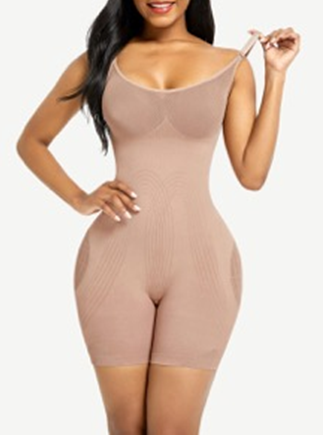Two garments that have become very popular in recent years are waist trainers and shapewear as they help achieve their desired body shapes. While they are often used interchangeably, they both serve different purposes and have different effects on the body.
It’s essential to understand the differences between waist trainers and wholesale shapewear, so you can make informed decisions into which one suits your goals and needs much better.
Their purposes and definition
Waist trainers are garments that have been designed to conch the waistline while providing compression around the midsection. These garments are typically made out of thick fabric with boning, others use latex to create a corset-like effect.
Its primary purpose is to enhance the hourglass shape of the body, temporarily reducing the circumference of the waist. There are even some people who use them during their workouts to promote sweating and aid some potential weight loss.
In contrast, shapewear refers to a broader category of undergarments that have been designed to smooth and sculpt the different areas of the body. Some pieces might include waist-cinching features, but their main focus is on providing support and overall shaping.

It comes in many different styles, including shorts, leggings, and bodysuits, amongst others, which target specific areas of the body, like the buttocks, abdomen, waist, hips, and thighs. In contrast with wholesale waist trainers they aim to create a seamless silhouette under the outfits, rather than altering the body shape permanently.
The effects on our bodies
With waist trainers, you can get a more defined waistline. They provide compression which will give the appearance of a much flatter stomach and also have smoother contours. But it’s important to remember that the effects that waist trainers provide can be primarily cosmetics and temporary.

If you use them for an excessive or prolonged time, they can potentially lead to discomfort and even restricted breathing. This is why it’s recommended to use them with much more balance and moderation.
Shapewear, on the other hand, works by smoothing out bulges and redistributing the fat to create a much more streamlined silhouette. They also address multiple troubling areas at the same time.
Shapewear compresses and shapes various areas of the body, enhancing the appearance of clothing and also boosting the wearer’s confidence. But as it happens with waist trainers, prolonged use can cause discomfort, and even impact circulation and digestion if they are worn too tightly.

Occasions and use
Waist trainers are often used for events or special occasions when people want a more dramatic hourglass figure. They are worn commonly under formal dresses or other tight-fitting outfits so the wearer can achieve enhanced curves and a cinched look waistline.
Some people incorporate their waist trainers into their workout routines as they will help them intensify the production of sweat and accelerate fat loss. But it’s important to exercise with caution and always listen to the body when using waist trainers.
Shapewear, on the other hand, is more suitable for everyday use and can be incorporated into different outfits. They will help create a more streamlined and smoother look. You can wear them for occasions such as casual outings, work, or social events as they will give you an extra layer of confidence while smoothing out lumps and bumps.
Shapewear also can be found in different compression levels, allowing you to choose your desired level of shaping and support, based on your comfort level and preferences.
Both will give you amazing results and help you look and feel your best no matter what you are doing or the occasion you are attending. They’ll be your best allies.

